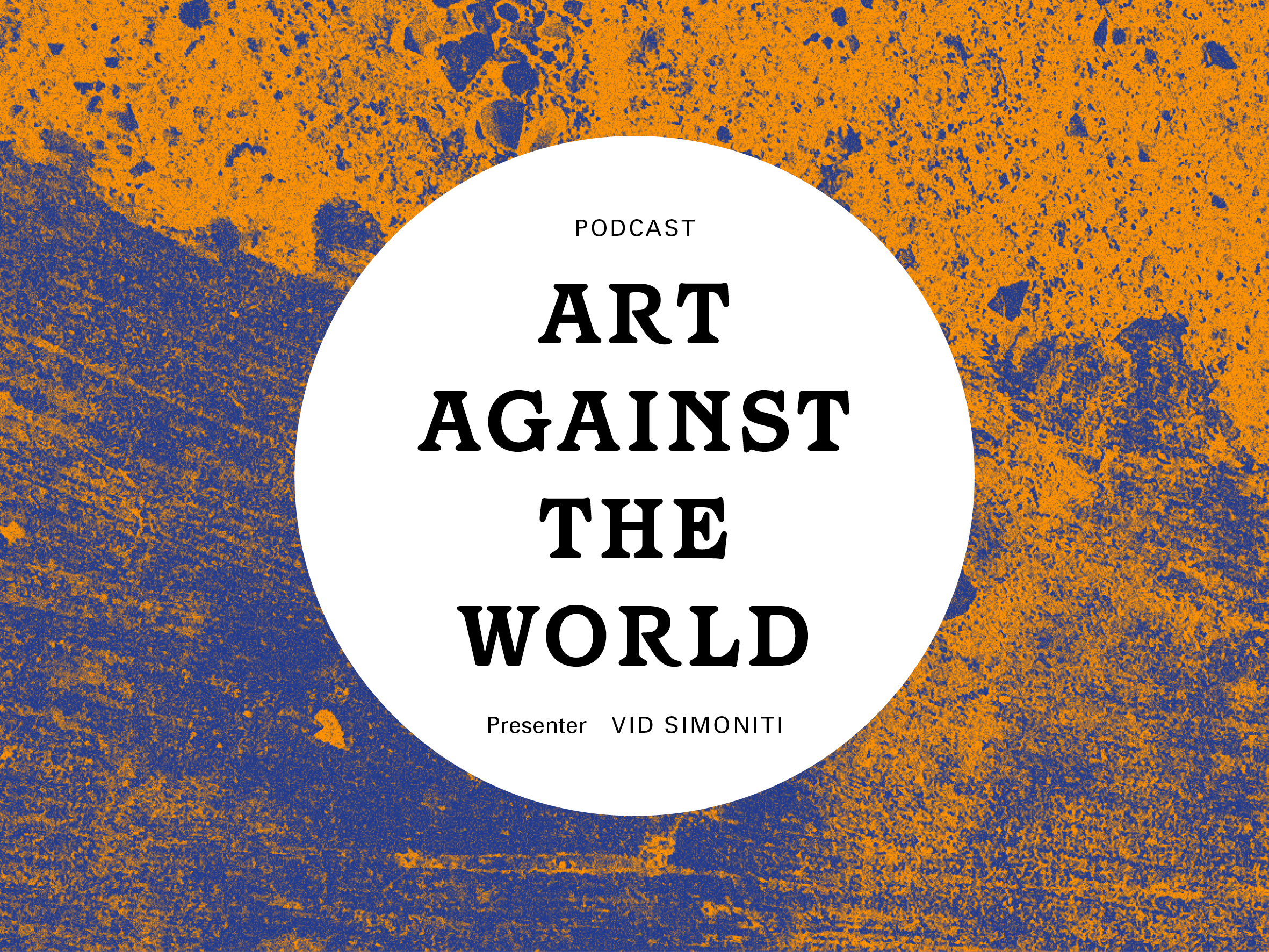
Vid Simoniti’s podcast “Art Against the World” explores ways in which contemporary art is socially relevant. Subscribe on Spotify, Apple, or wherever you get your podcasts.
What follows is a guest post by Vid Simoniti (University of Liverpool).
Contemporary exhibition-based art embodies a certain paradox. On the one hand, it is the most politically engaged of all the arts. From feminist performance to anti-racist conceptual art, from social art projects to ecological earth works, the whole identity of contemporary art is structured around a refusal of the social status quo. On the other hand, contemporary art is also the most incomprehensible of the arts. It’s easy enough to find yourself in a gallery, staring at a pile of unrecognizable objects, which are supposed to be about the excesses of capitalism, though you are at a loss to say what the connection is.
So we have two claims: contemporary art is political; contemporary art is hard to understand. You may wish to deny one or both of them, but they are the reason I find thinking about contemporary art so philosophically thrilling. How could something seemingly so obscure have an impact on society?
Many philosophers have inquired into art’s socio-political relevance—from Mozi to Plato, from W.E.B. Du Bois to Martin Heidegger, all the way to contemporary work by Paul C. Taylor, Sherri Irvin, or Santiago Zabala. But in academic philosophy we rarely get the opportunity to think through these questions with artists, to really immerse ourselves in their work. So I was thrilled at the opportunity to record a podcast series with artists and curators involved with the Liverpool Biennial 2021.
“Art Against the World” is a collaborative series produced by the Liverpool Biennial, the biggest art festival in Britain, and the University of Liverpool, where I’m a lecturer. Across six episodes, I interview some of the artists showing at this year’s exhibition, whose work responds to pressing issues of our time, including climate catastrophe, our changing bodies, and legacies of colonialism.
Below, I’ll summarize each episode but highlight theoretical issues that, I hope, will be of interest to the philosophically inclined.
1. Violence
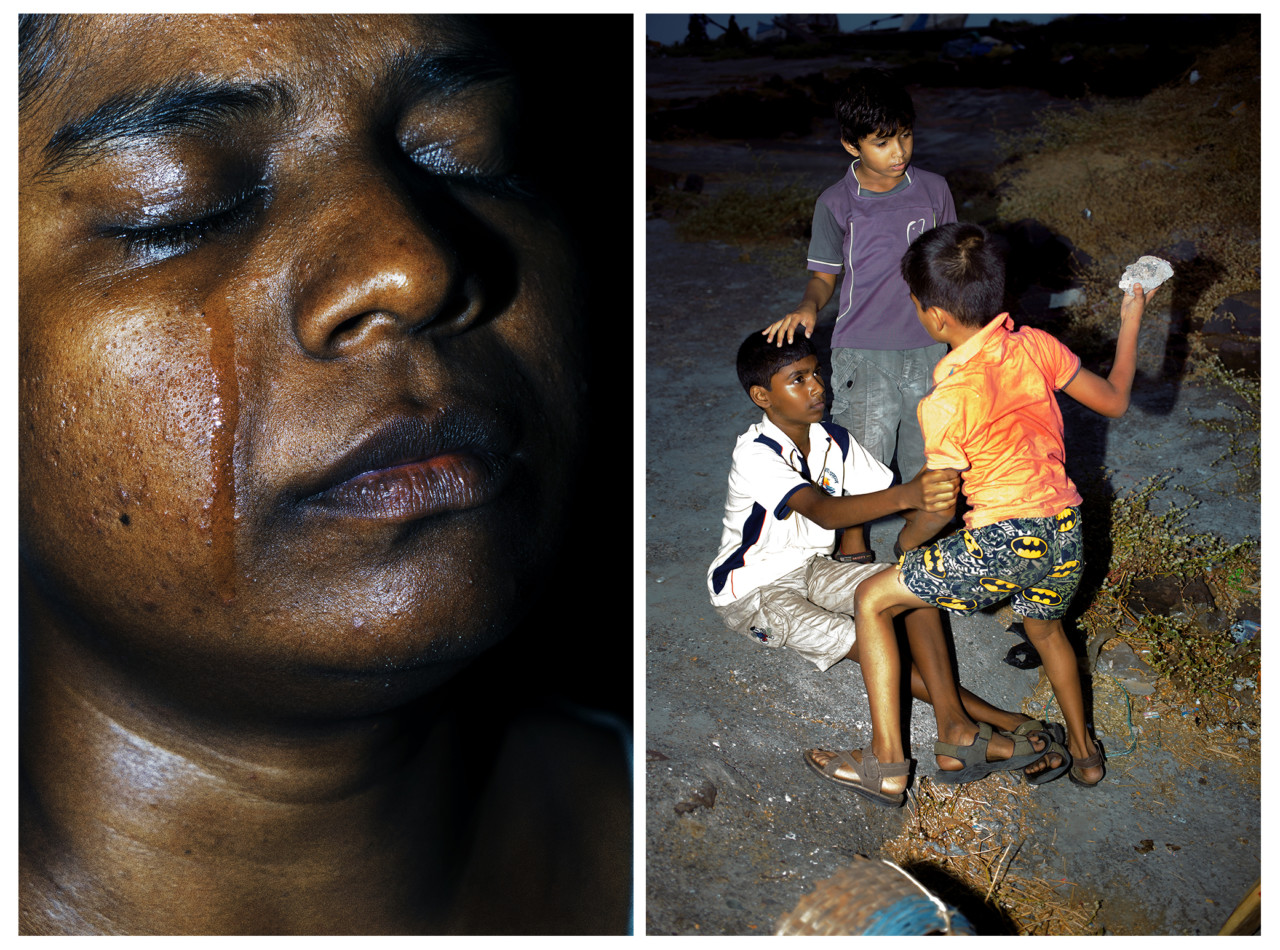
Topic: How should art show violence? Listen Here
Guests: Photographer Sohrab Hura talks about his allegoric photographic series The Coast (2017), a response to the way social media fuels violence in India. Painter Ebony G Patterson discusses her portraits of murdered gang members in Jamaica, Of 72 Project (2011). We are joined by curator Catalina Lozano.
Discussion: Hura’s photographs depict a religious ritual in an unnamed coastal village in Southern India. Taken at night, the photographs show people bathed in the stark flash of the camera. A child raises a rock, poised to hit his companion on the head; a tear trickles down a woman’s face; a man is covered in blood. A certain violence pulses through the images, but there’s also the question of the camera’s violence. As Susan Sontag put it, the camera is a “sublimation of the gun”; it shows people in ways they do not wish to be seen themselves.
Hura himself is examining issues of photographic violence in the new context of social media. India’s populist Prime Minister Narendra Modi was elected in 2014, and since then rumours and graphic videos have spread on social media and fuelled anti-Muslim attacks. Hura’s The Coast is a way to think through this new ethics of photography, which now has more to do with the nature of image distribution—how they are shared, what kinds of groupthink they enable—than with the issue of who is behind the lens.
Ebony G Patterson’s paintings, meanwhile, unexpectedly juxtapose violence with beauty. Beauty was, for a long time, banished from the artworld as too closely aligned with the culture industry. But Patterson’s portraits of gang members, both victims and perpetrators of violence, are encrusted with gems and covered in flowers. She states, “these bodies too are dignified, worthy of dignity.” In this way, Patterson suggests, beauty can be made to play a socially critical role.
2. The Forest
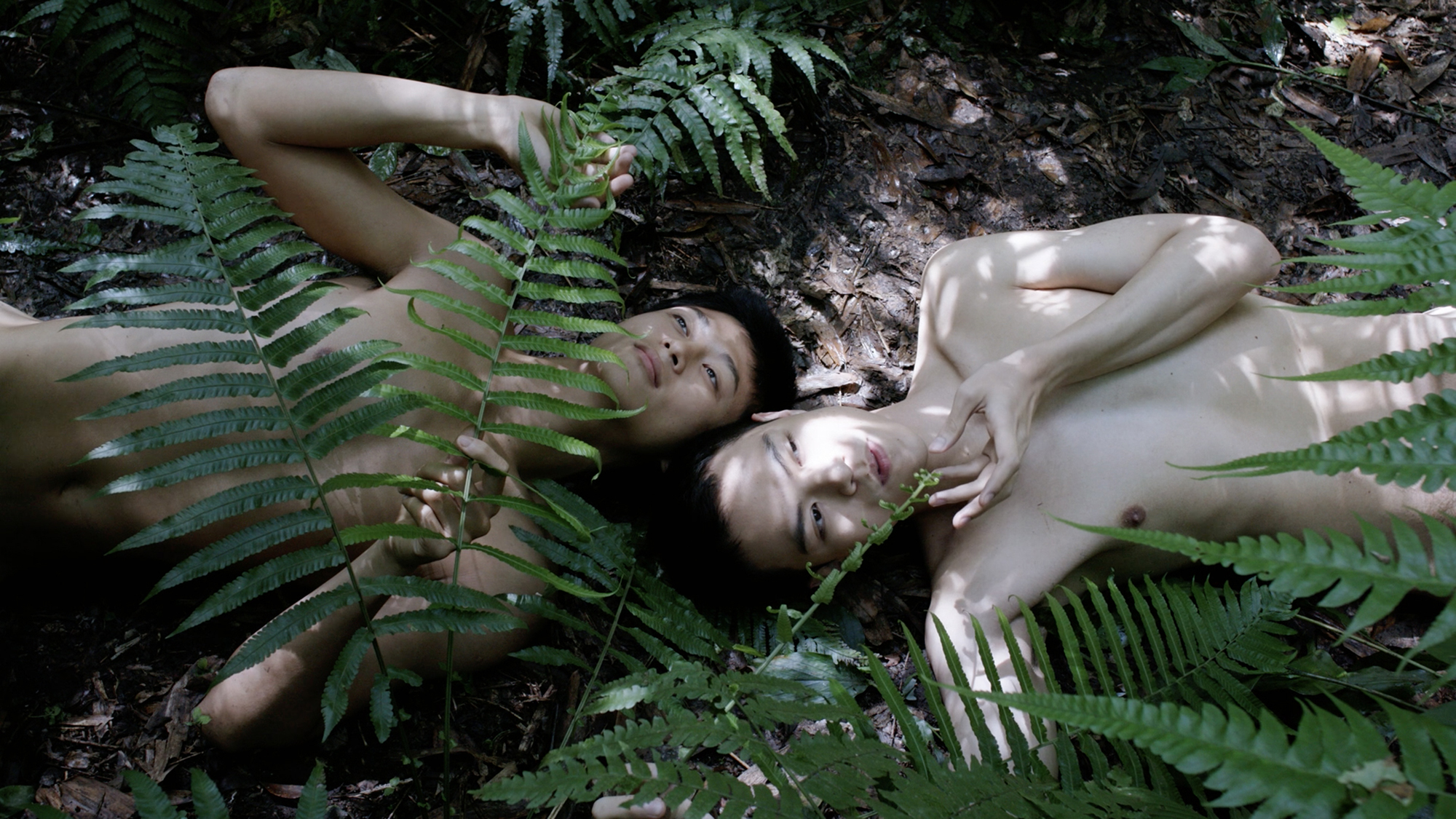
Topic: How can art respond to ecological challenges? Listen Here
Guests: Jorge Menna Barreto relates how his food-based artistic practice protects the Amazon rainforest, and video artist Zheng Bo discusses the erotic side of ecology. We are joined by curator Margarida Mendes.
Discussion: Jorge Menna Barreto and Zheng Bo represent two almost opposing approaches to ecologically-minded art: action and poetics. Menna Barreto’s Restauro (2016) is a collaborative social project. He took over the restaurant at the Art Biennial of São Paolo in Brazil, serving meals sourced from agroforestry. As such, the work is a representative of socially engaged art: the artist becomes an organiser and an activist, as much as a maker of objects.
Philosophically, I find socially engaged art fascinating (I wrote about it in a paper for the Journal of Aesthetics and Art Criticism): contemporary socially engaged art is a fruition of the avant-garde dream of merging art with (social) life. It is not, however, without its conundrums. Above all, what makes it art? We disentangle some of these issues in the episode.
Zheng Bo’s work is equally passionate about the Earth’s forests, but here the passion becomes more literal, erotic. In Bo’s mesmerizing videos, young men engage in sexual acts with plants. With Zheng Bo and the curator Margarida Mendes we discuss the aesthetics of an “eco-sexual” practice.
Some may say that these fantasies are too fanciful to be ecologically serious. But environmental aesthetics has emphasized the need for wonder, beauty, and the sublime. If these aesthetic categories are so important to stimulating our ecological imaginations, we might ask, why not eros?
3. Transitions

Topic: How can art portray our changing bodies? Listen Here
Guests: Pedro Neves Marques’ film raises the possibility of male pregnancies; while Ane Graff’s sculptures show how our bodies adapt to pollution. We are joined by curator Chus Martinez.
Discussion: Can art envision a world in which all stable gender categories become a distant memory? This is certainly a theme in Pedro Neves Marques’ films, such as Becoming Male in the Middle Ages (2021), a story about a male pregnancy. Neves Marques’ works often feel like a pressure cooker of eroticism and anxiety, where intimate power relations between protagonists collide with the new possibilities of biotechnology.
Queer aesthetics has often been subversive: think, for example, of the subversive aspects of drag, as theorized in Judith Butler’s Gender Trouble (1990). But new queer art, such as Neves Marques’, seems to me a lot more interested in exploring utopian states beyond gender.
Ane Graff’s work acknowledges other ways in which our bodies can change. Graff creates fascinating sculptures that portray how human bodies have been transformed due to industrialization. She evokes the feminist materialism of Karen Barad to explain her work, and we discuss why philosophical new materialisms have been so attractive to many contemporary artists working today.
4. The Port
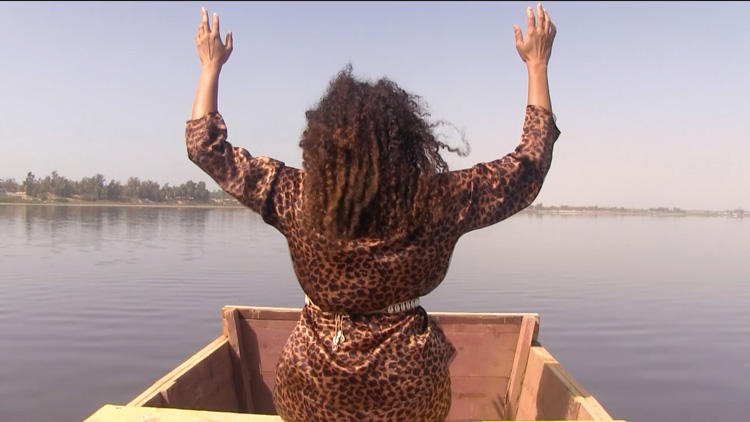
Topic: How does art connect contemporary migration with colonial histories? Listen Here
Guests: Alberta Whittle’s video Between a Whisper and a Cry unearths links between climate change and colonialism. Invernomuto’s sound installation Black Med traces the influences of the African diaspora on Mediterranean music. We are joined by curator and lecturer Elvira Dyangani Ose.
Discussion: Alberta Whittle’s 45-minute video piece is a poetic meditation on a hurricane season rhyme from the Caribbean, where each line recalls the usual weather pattern. But climate change has changed the seasons and brought regular devastation to the region.
I’ve watched Whittle’s video many times; it is one of those complex works that repays each viewing. Here art becomes a form of argumentation. Two seemingly different themes—the history of the slave trade and climate change—are juxtaposed visually to make a convincing claim: the very same logic of global exploitation that enabled slavery lies behind climate catastrophes as well.
Invernomuto are Italian artists and DJs, whose multi-sensory installation Black Med shows how musical influences followed patterns of migration across the Mediterranean sea. We hear how Nigerian pop reverberates in Italy or France, or how Sicilian songwriters took inspiration from the Sahara. In Europe, “Mediterranean culture” has often been observed from its northern shore, but this project shows cultural influences in all their complexity. As curator Elvira Dyangani Ose reflects, art can transform an archive (in this case, an archive of sounds and music) into a place for storytelling.
5. Speculation
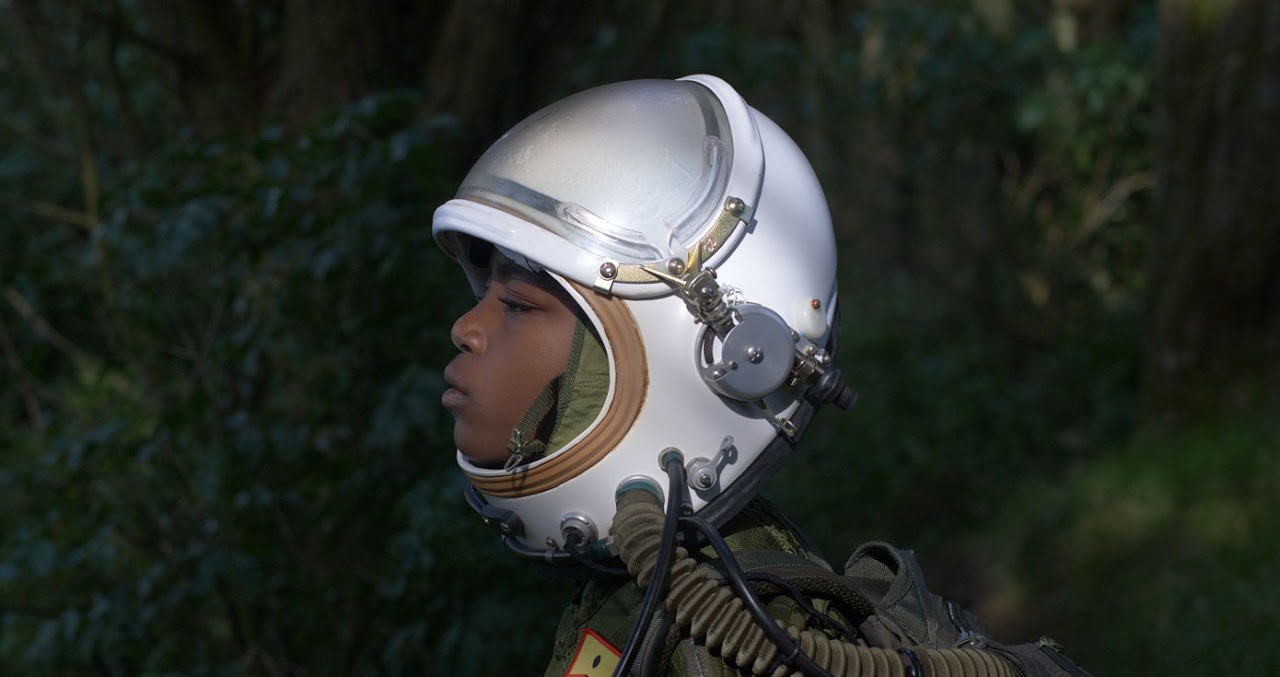
Topic: What is the value of speculative fiction? Listen Here
Guests: Larry Achiampong’s work speculates on a possible future in which the African Union is the only superpower left; Luisa Ungar takes us on a zoo visit that walks a fine line between fiction and reality. We are joined by the critic Pablo Larios.
Discussion: Larry Achiampong’s The Relic Traveller series is a multi-media project spanning films, installations and even flags. In one of the films, we see a woman with an astronaut’s helmet traversing an eerily empty landscape. She collects audio clips: these are testimonies of racist oppression, but as viewers we are not quite sure from what time. Are they being gathered 50 years from now, or 500? And do the testimonies refer to the Transatlantic slave trade of two hundred years ago, or to the forms of discrimination that exist in our own time?
With Achiampong we discuss the relationship between his work and the term ‘Afrofuturism’, and how speculative fiction helps to unearth erased histories of the Black British diaspora.
Luisa Ungar’s work, meanwhile, intertwines the speculative and the historical in a different way. Her work mirrors the pedagogical encounter of the guided tour, only that we are never quite sure what is true and what not. Her Guided Zoo Tour enacts increasingly improbable stories of Colombian drug cartels’ animal trade, only for the audience to realise that they all in fact happened.
In philosophy, we often compare speculative art with philosophical thought experiments, but with these artworks, at least, the role of speculation seems different. Thought experiments produce certainty (they are “intuition pumps”). The works of Ungar and Achiampong create uncertainty as to what we see. But that is where their value lies.
6. Biennial
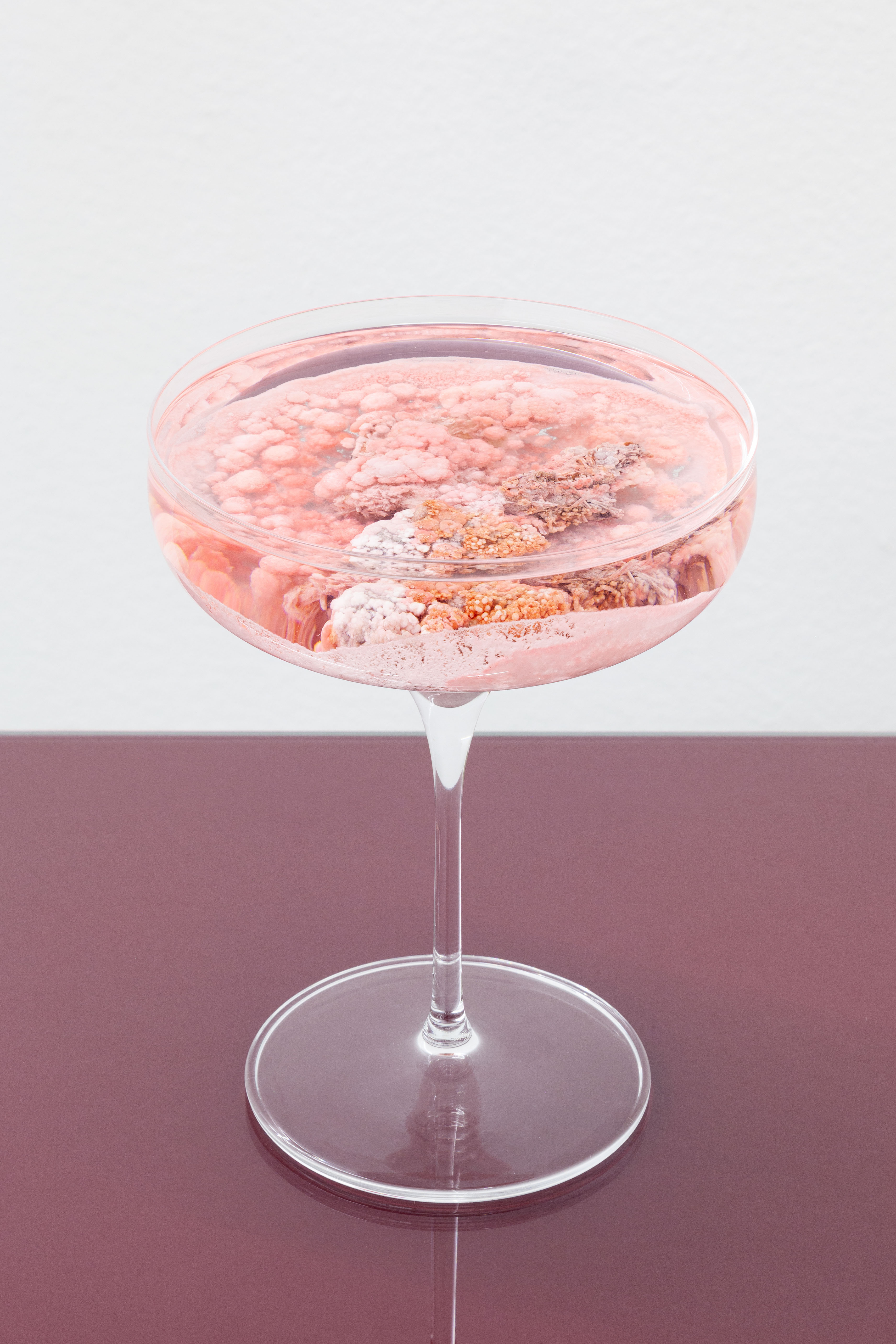
Topic: What are biennials for? Listen Here
Guests: I talk to two curators behind Liverpool Biennial 2021, Sam Lackey and Manuela Moscoso.
Discussion: The argument-driven art that we have discussed in the series is perhaps only possible because we now live in the era of the art biennial: the large-scale exhibition, which responds to global political challenges. Since their rise in the 1990s, biennials have been places to connect the urban life with art, as Sam Lackey explains. With Manuela Moscoso we discuss her concept for this year’s exhibition, ranging from the body’s fluid boundaries, Kant’s obsession with coffee and… cannibalism.
Vid Simoniti is a lecturer in philosophy at the University of Liverpool, where he runs MA Art, Philosophy and Cultural Institutions. He is also a BBC New Generation Thinker 2021. Find him on Twitter at @vidsimoniti.


